Jul 2024
(Published Manuscript)
Introduction
Although advanced genetics, nutrition and management have led to increased efficiency in broiler chicken production, they are still often afflicted by physiological and metabolic disorders which lead to economic losses for producers. As genetic advancements increase production efficiency and lead to a shorter life to slaughter timeframe, the embryonic and immediate post-hatch time period become critical for production viability of broilers.
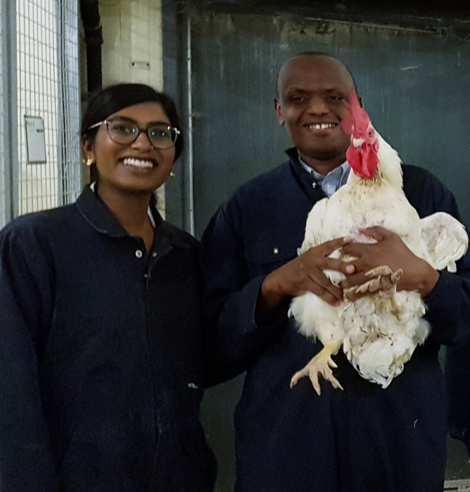
Drs. Aizwarya Thanabalan and Elijah G. Kiarie
The breeder hen’s diet supplies nutrients to the hatching egg which is critical for embryonic development. Specifically, energy and essential polyunsaturated fatty acids (PUFA), such as linoleic (LA) and α-linolenic (ALA), supplied by the egg act as critical nutrient sources during embryogenesis and early post-hatch. Supplied through the breeder hen’s diet, ALA, provides longer chain omega-3 polyunsaturated fatty acids (n3-PUFA). Consequently, there is vast potential for improvements to production and health through the nutritional supplementation of n3-PUFA in breeder hen diets. In addition, due to increased public pressure to limit usage of antimicrobial growth promoters (AGP), research efforts have focused on identifying specialty feed additives to act as alternatives to AGP in reducing disease in broiler chicken production.
However, there is still a knowledge gap regarding breeder hen nutrition, specifically the impact of n3-PUFA in breeder hen diets and its impact on progeny performance, health and welfare.
Objectives
University of Guelph research investigated the impact of supplementing Omega-3 polyunsaturated (PUFA) fatty acids in the broiler breeder hen diet on progeny performance.
Experiment
The experiment was conducted at the Arkell Poultry Research Station, University of Guelph (Guelph, ON, Canada). Five hundred and eighty-eight pullets and 60 cockerels (Ross 708) were sourced from Aviagen (Aviagen Inc., Huntsville, AL, USA). The pullets and cockerels were floor raised and grouped based on the assigned rearing and laying diet.

Starting at 23 weeks of age Breeders (rearing and laying) were allocated to dietary treatments: (1) control (CON); (2) CON + 1% Microalgae (Aurantiochytrium limacinum) fermentation product, DHA source diet (DMA); or (3) CON + 2.5% co-extruded full-fat flaxseed and pulse mixture (50/50, wt/wt; linPRO, O&T Farms), ALA source diet (linPRO). Chicks (Progeny) were hatched from eggs collected from the breeder hens at 34, 44 and 54 weeks of age, and were raised in metabolic cages within their breeder treatment groups.  Progeny from CON breeders remained in CON and progeny from DMA and linPRO breeders were divided into post hatch treatments with the 5 post-hatch (progeny) treatments being CON-CON, DMA-CON, linPRO-CON, DMA-DMA and linPRO-linPRO. Diets for progeny were formulated as 2-phase: starter (d 1-10) and grower/finisher (d 11-42). Health and performance of progeny was followed from hatch to d-42, with chicks being challenged with Eimeria culture on d-10 post hatch. Chemical analyses was performed on the diets to determine nutrient concentration (dry matter, crude protein and crude fat) and diets 2 and 3 were formulated to provide similar n-3 and n-6 ratios. Measurements throughout the experiment included live bodyweight, intestinal lesions, tibia and organ weight (liver, spleen, bursa, and breast), blood immunoglobulin A (IgA) in the progeny, and fatty acids concentration in the hatching eggs.
Progeny from CON breeders remained in CON and progeny from DMA and linPRO breeders were divided into post hatch treatments with the 5 post-hatch (progeny) treatments being CON-CON, DMA-CON, linPRO-CON, DMA-DMA and linPRO-linPRO. Diets for progeny were formulated as 2-phase: starter (d 1-10) and grower/finisher (d 11-42). Health and performance of progeny was followed from hatch to d-42, with chicks being challenged with Eimeria culture on d-10 post hatch. Chemical analyses was performed on the diets to determine nutrient concentration (dry matter, crude protein and crude fat) and diets 2 and 3 were formulated to provide similar n-3 and n-6 ratios. Measurements throughout the experiment included live bodyweight, intestinal lesions, tibia and organ weight (liver, spleen, bursa, and breast), blood immunoglobulin A (IgA) in the progeny, and fatty acids concentration in the hatching eggs.
Implications
Research into the impact of Omega-3 feed ingredients on breeder hens and their progeny is critical for industry progress. Results from the research show that breeder hen nutrition and the successive feeding of linPRO can influence the long-term health and welfare of progeny. Compared to CON, both DMA and the linPRO feeding program increased n-3 PUFA concentration in hatching eggs and progeny diets. During the starter phase DMA and linPRO diets improved feed conversion ratio compared to CON.
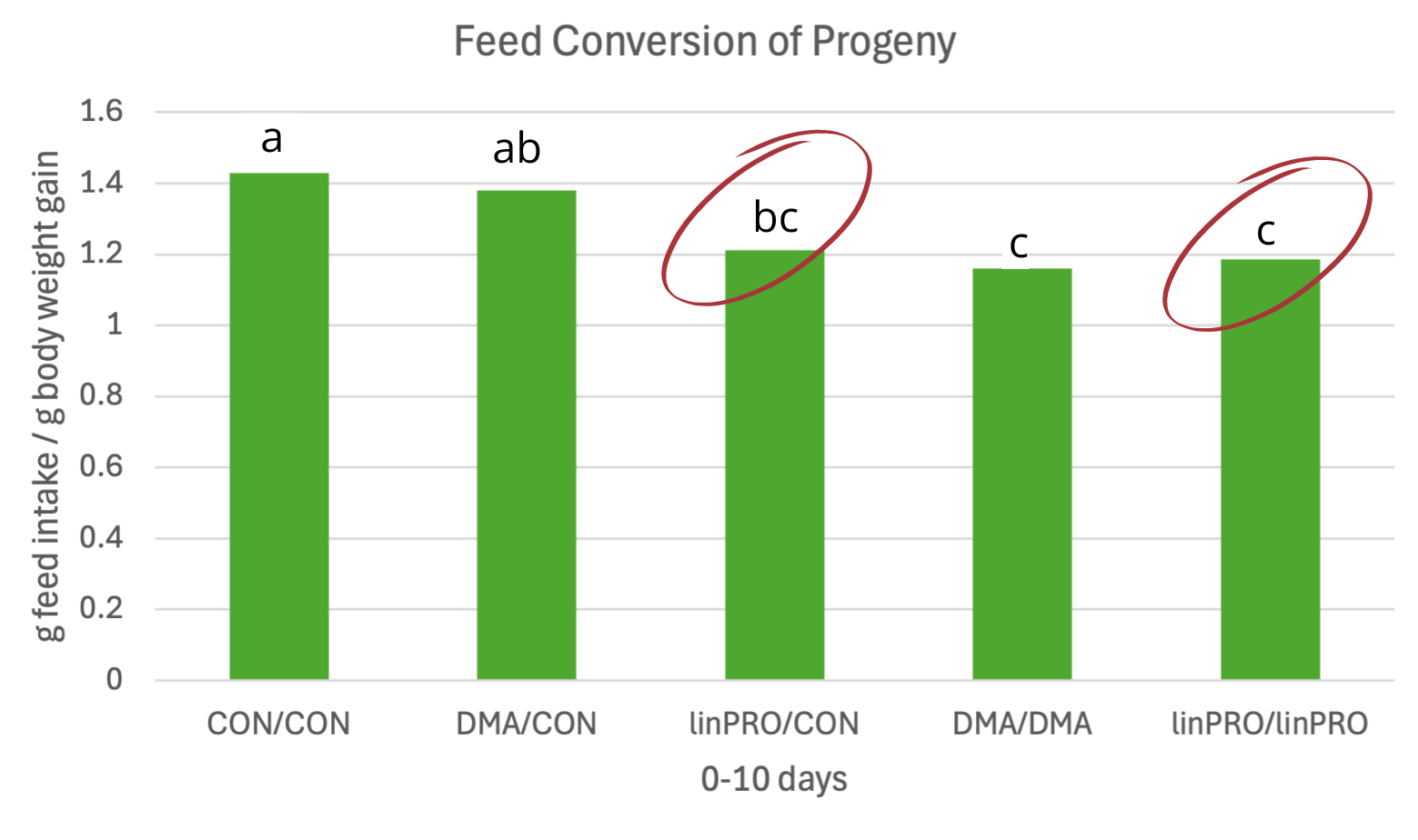
Including linPRO in diet improved FCR
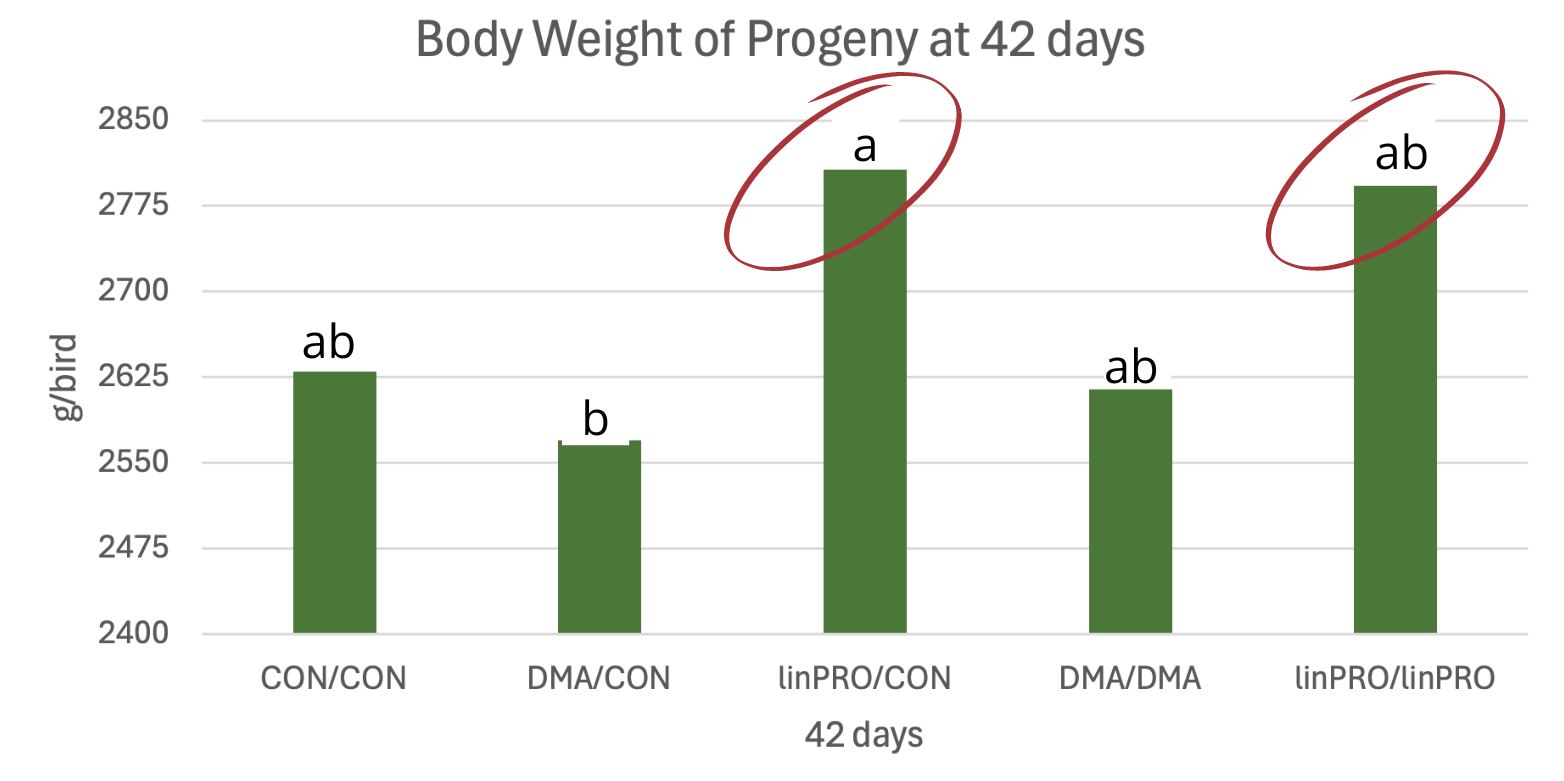
Progeny of linPRO breeder hens had higher body weight
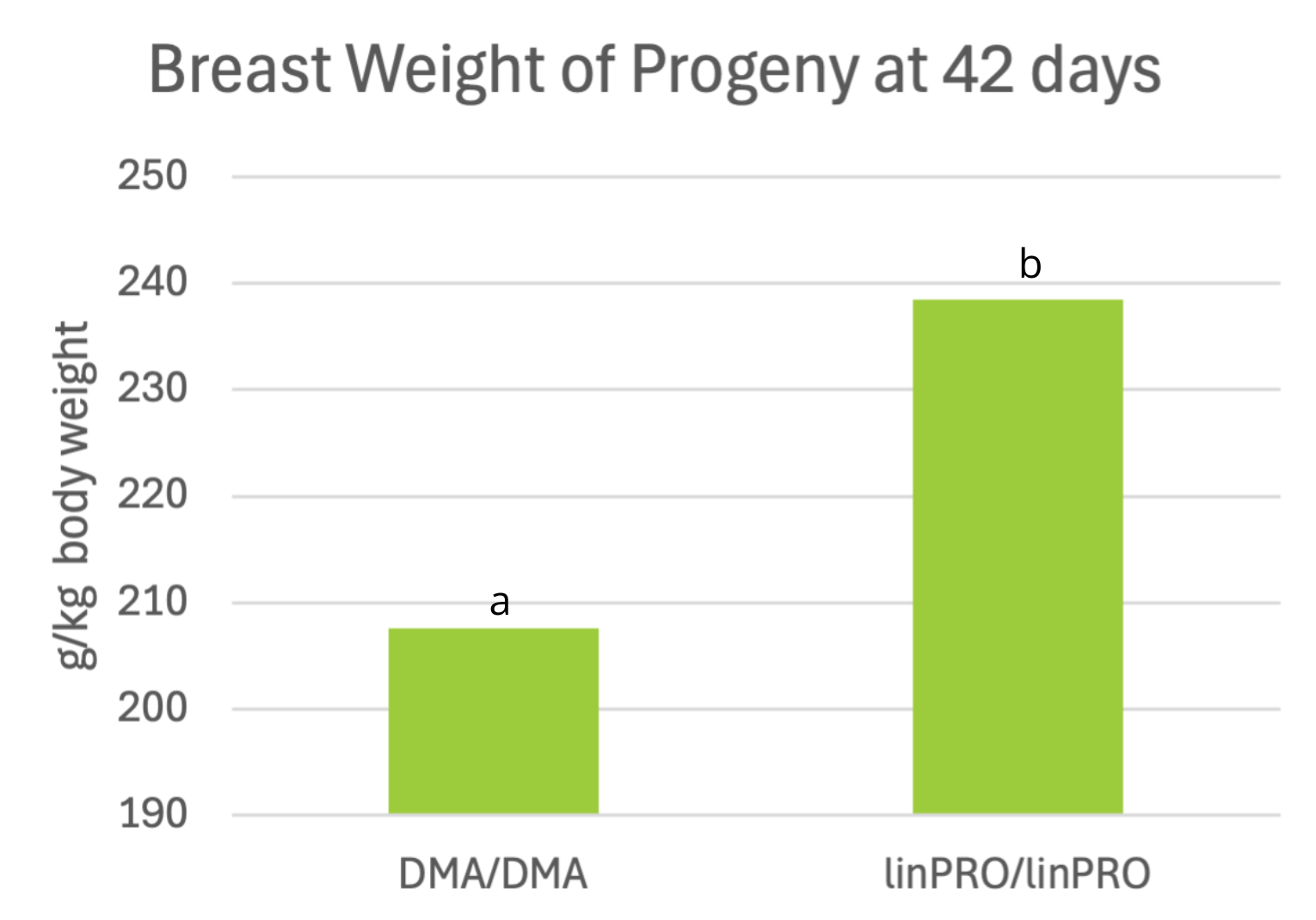
Successive feeding of linPRO increased breast weight in progeny.
No differences were observed in duodenum lesions scores, organ weight or plasma IgA between diets but successive DMA exposure led to increased jejunum lesion scores compared to control and linPRO fed birds.
Key Takeaways

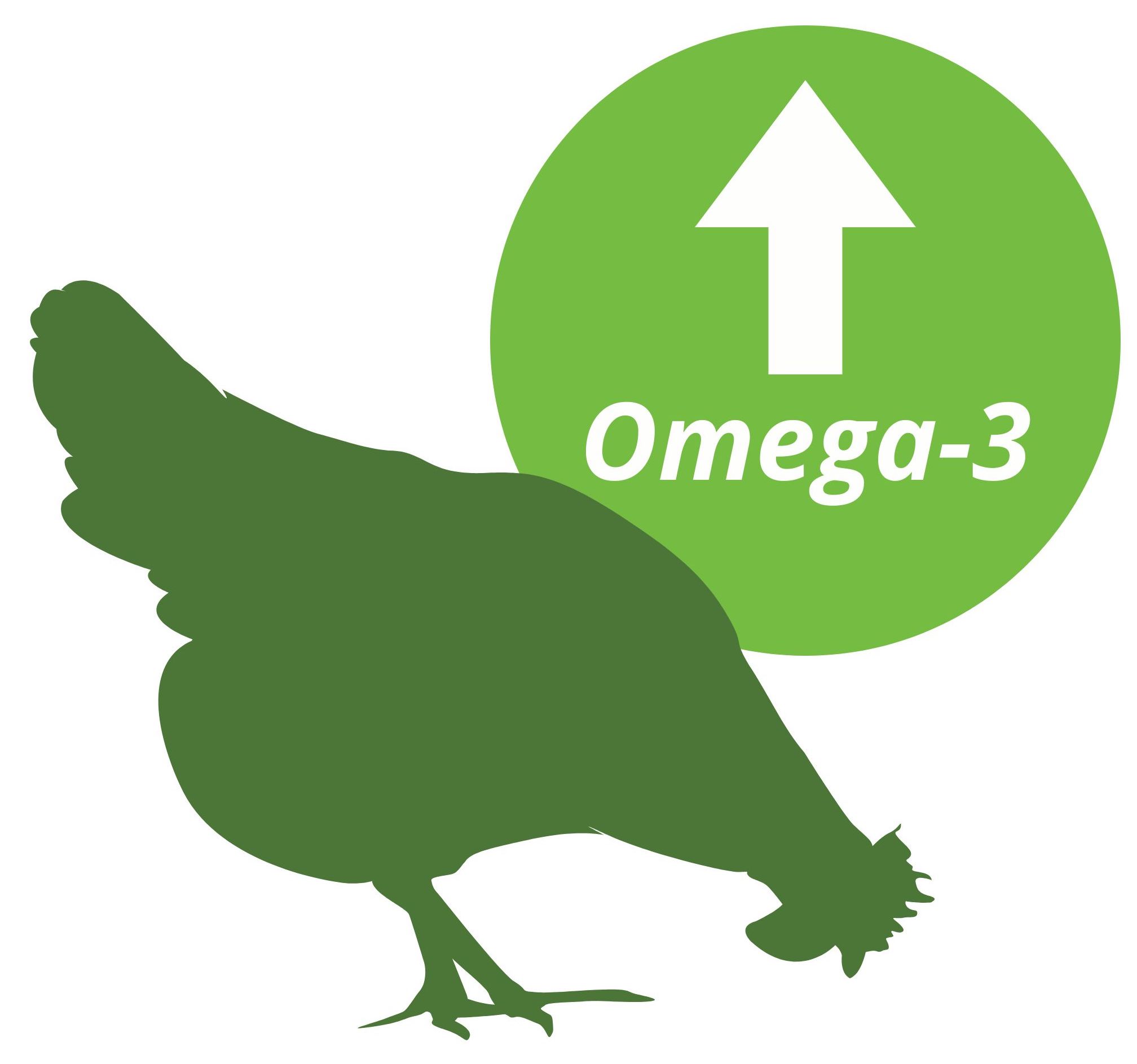
Acknowledgements
O&T Farms thanks Drs. Aizwarya Thanabalan and Elijah G. Kiarie. The published research paper in Poultry Science can be read in its entirety by clicking the button below. Significance of successive feeding of sources of n-3 fatty acids to breeder hens and their progeny on growth performance, intestinal lesion scores, lymphoid organs weight and plasma immunoglobulin A in broiler chickens challenged with Eimeria. (2024). Poultry Science 103: 1-12.





